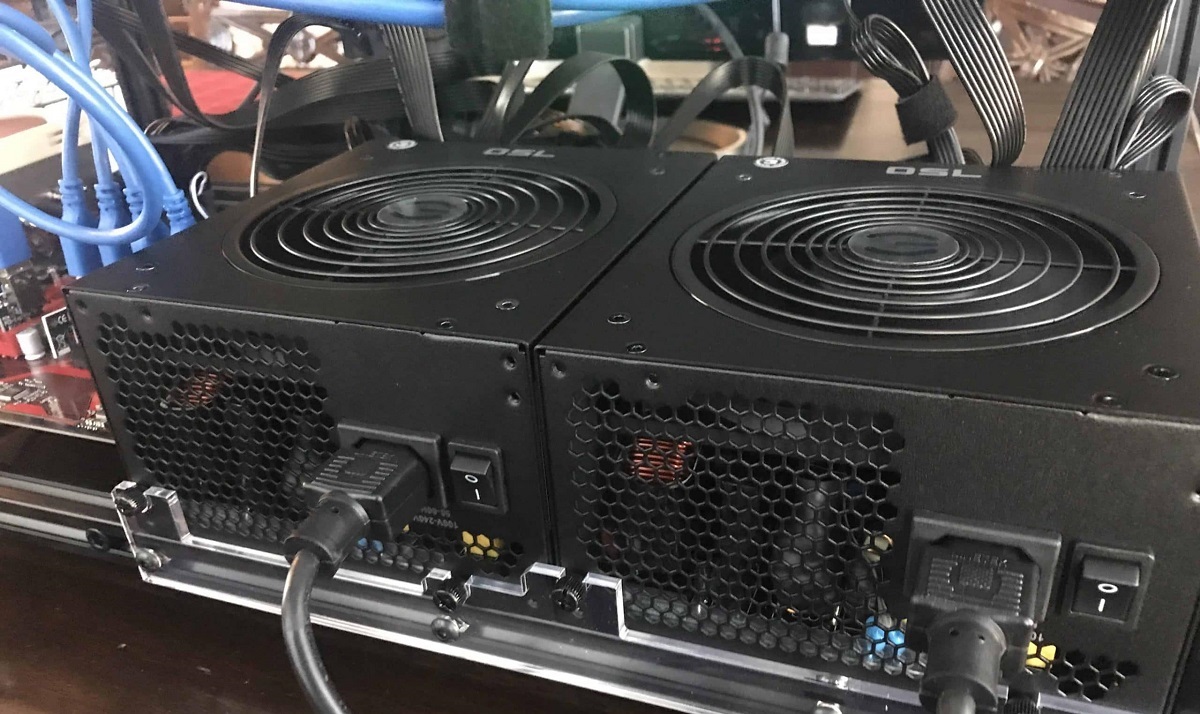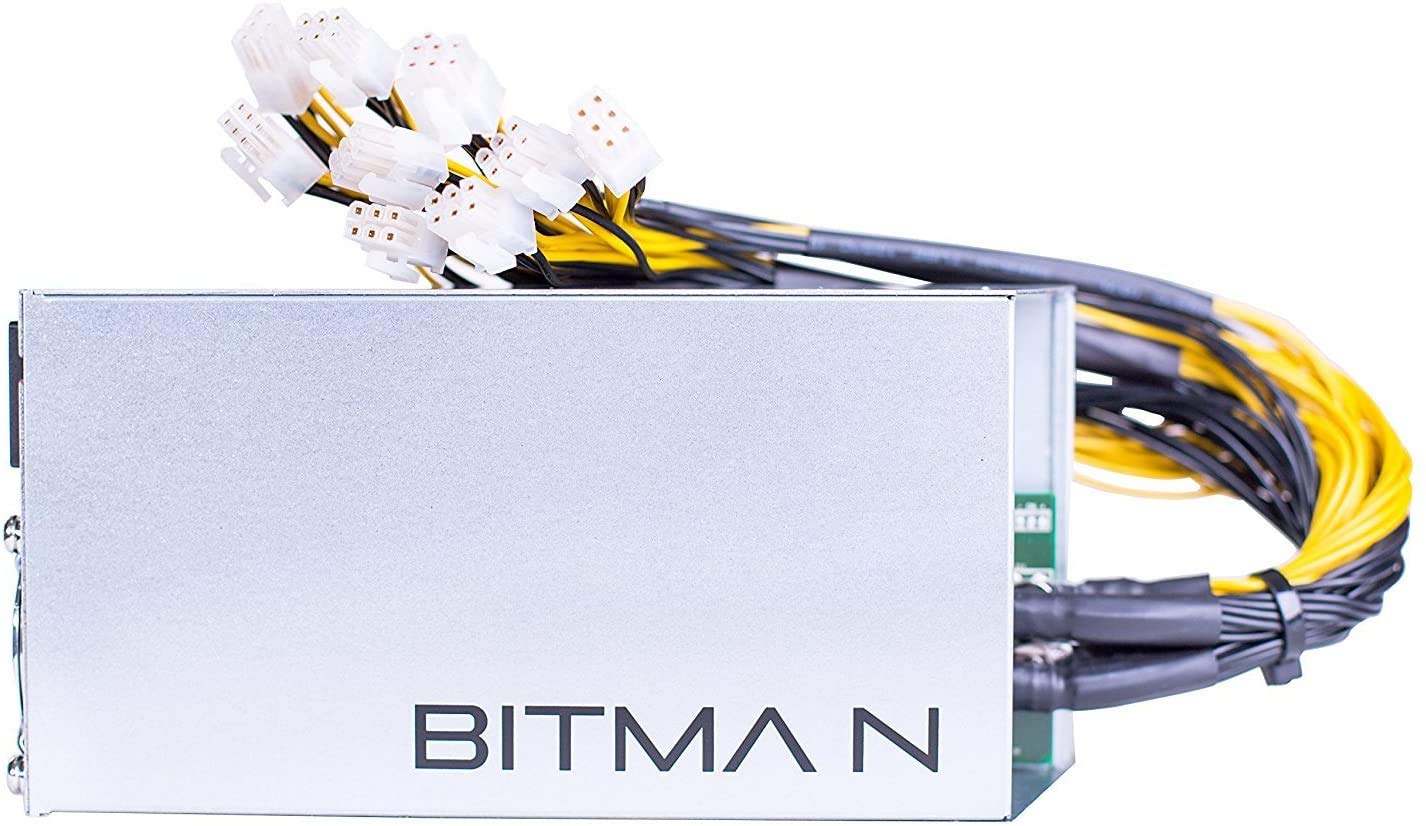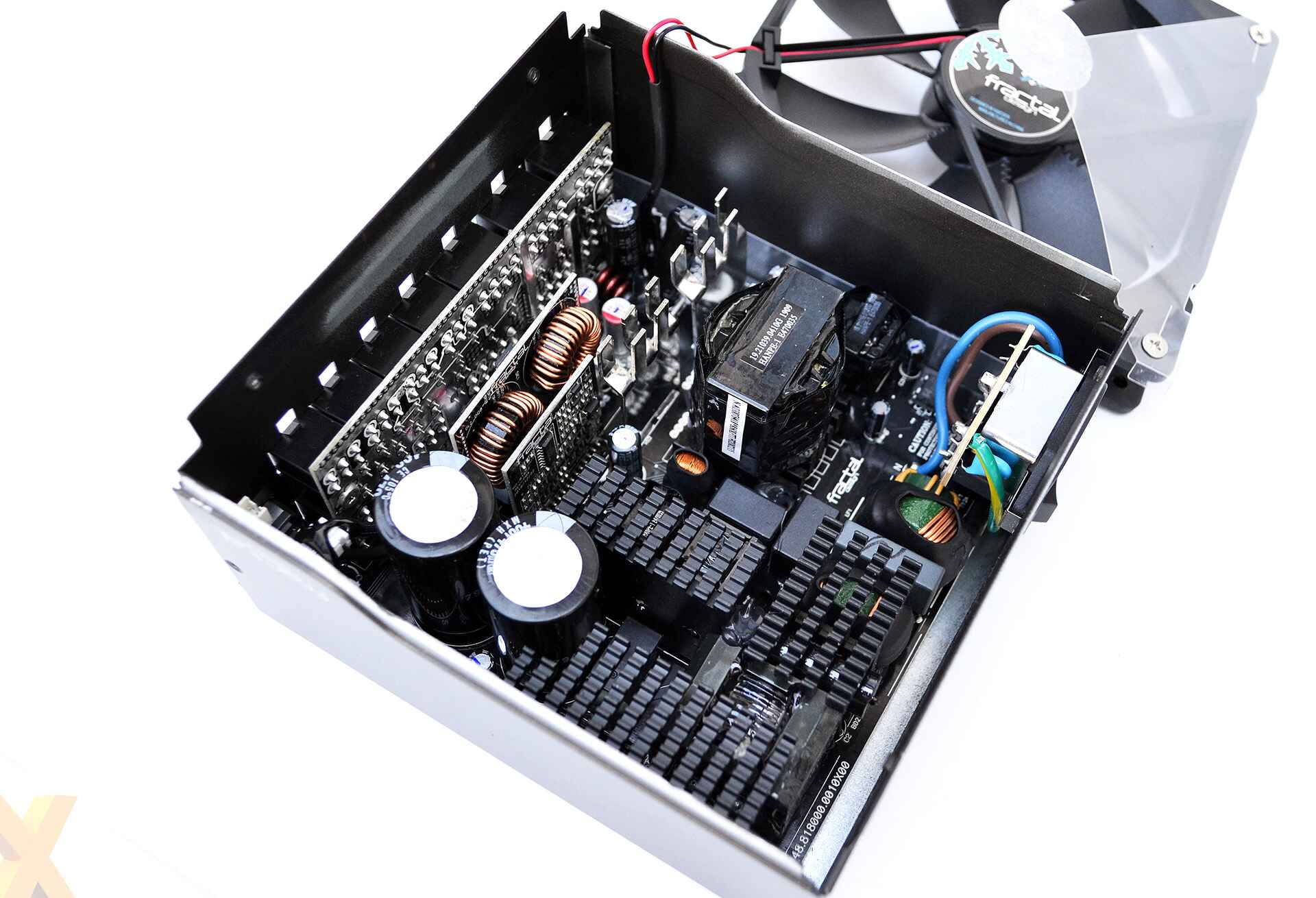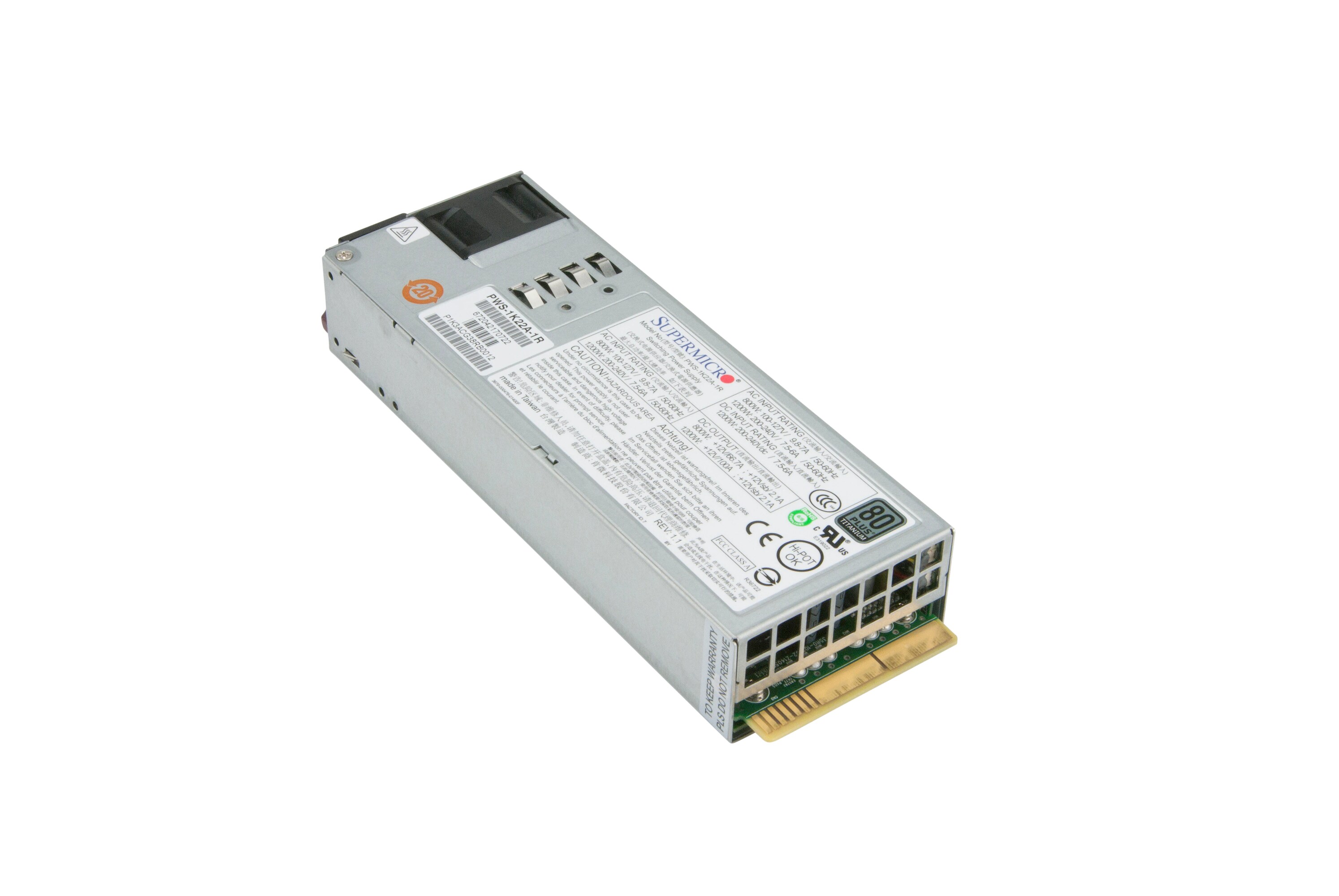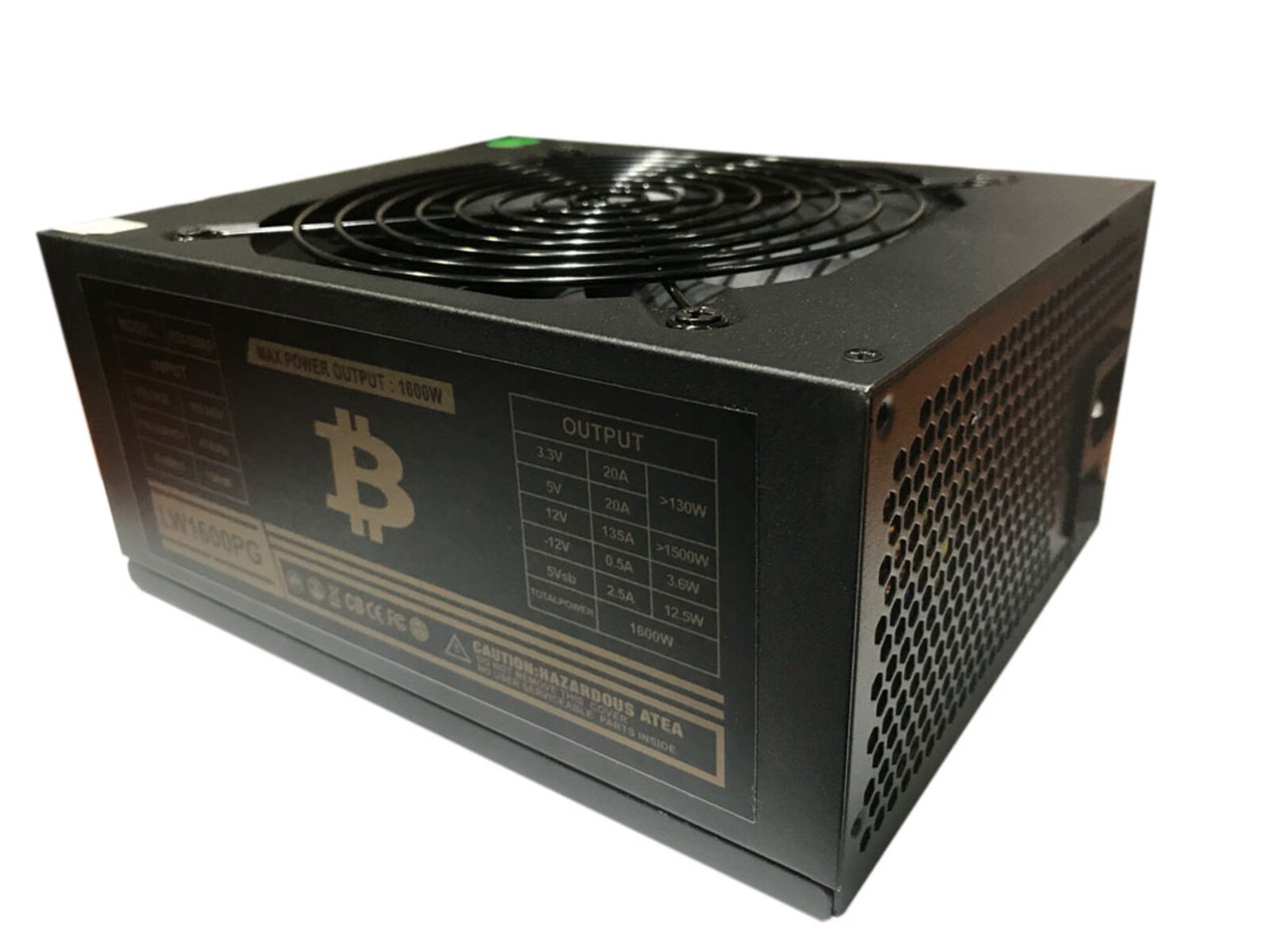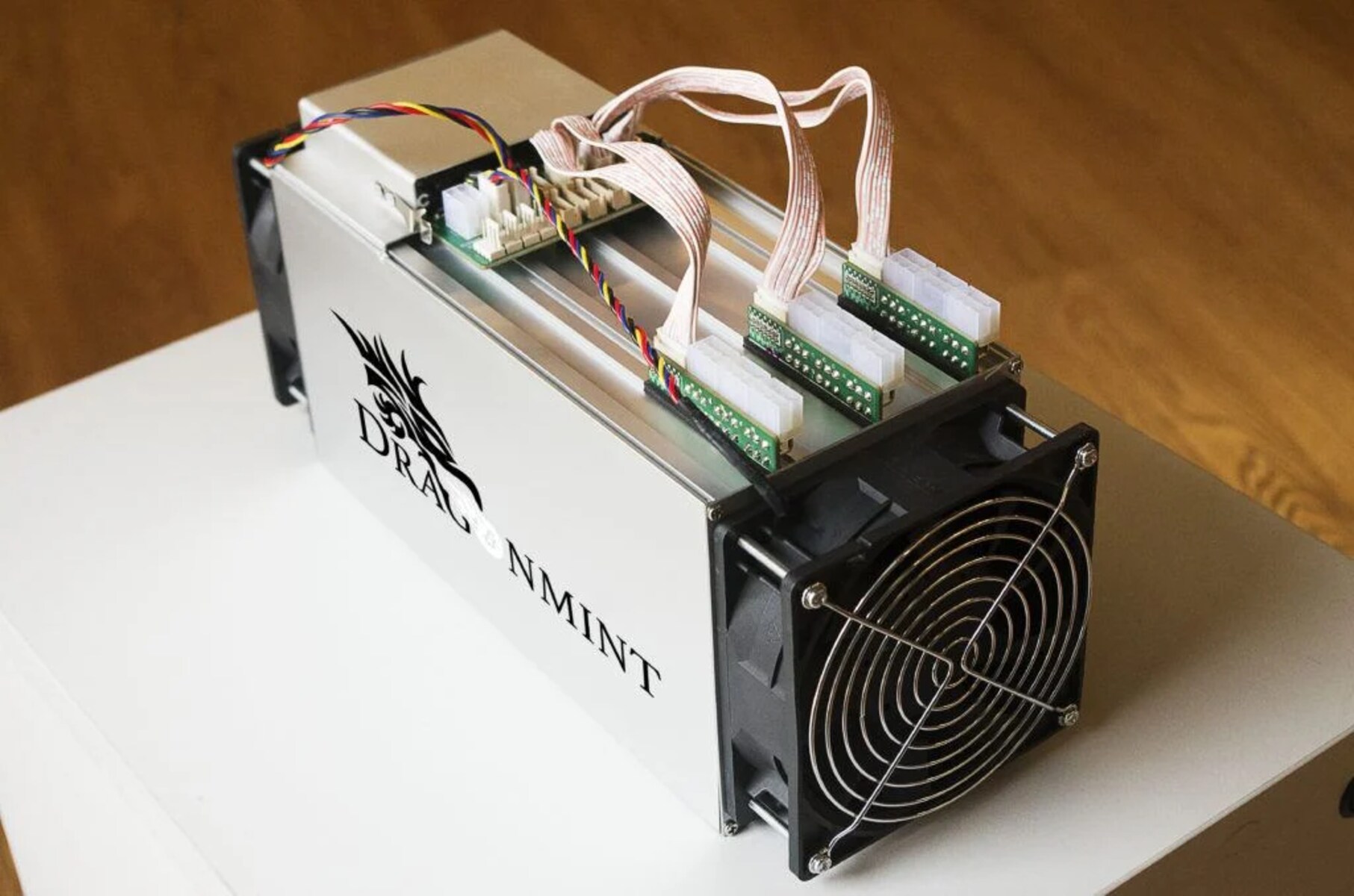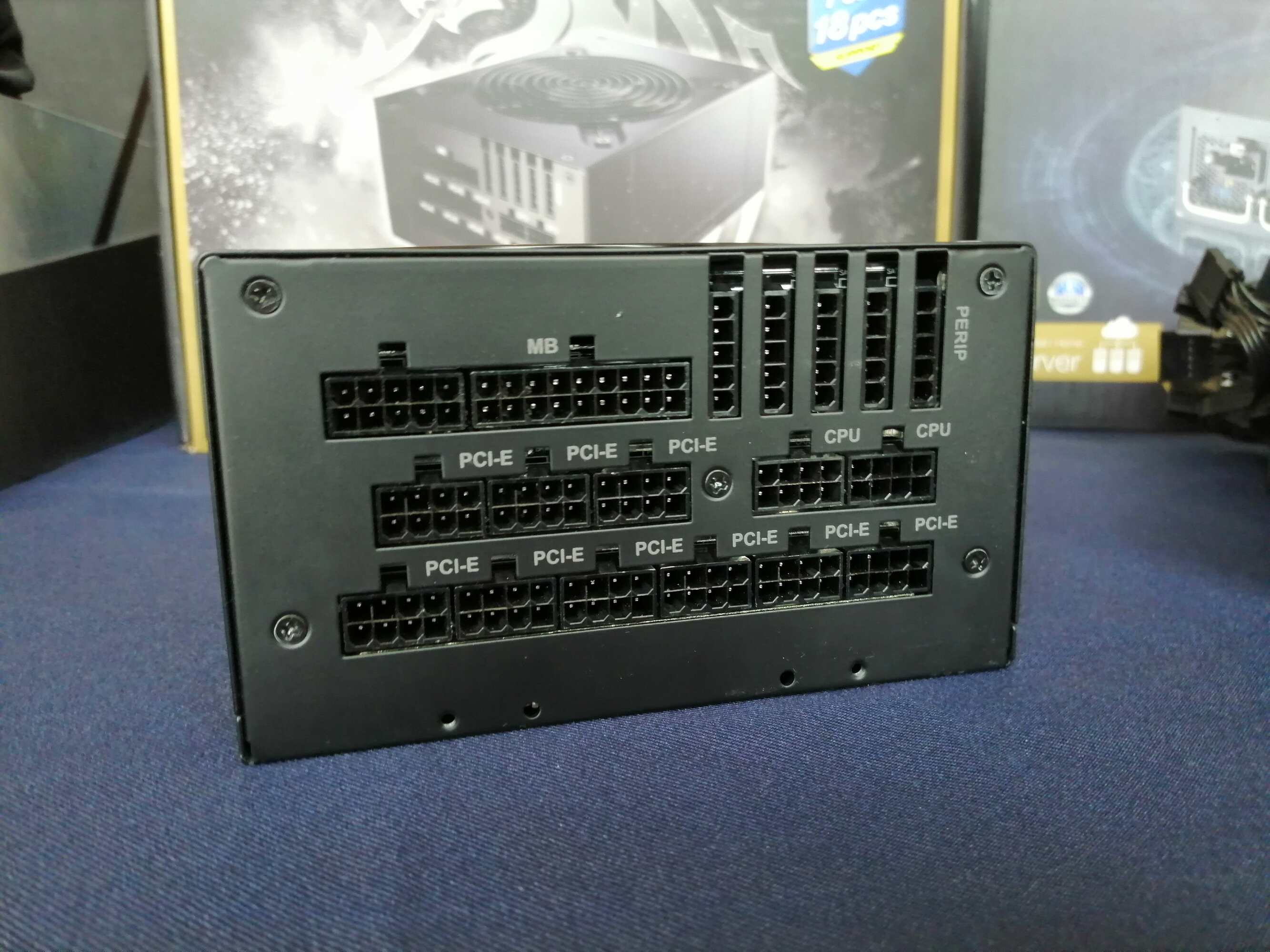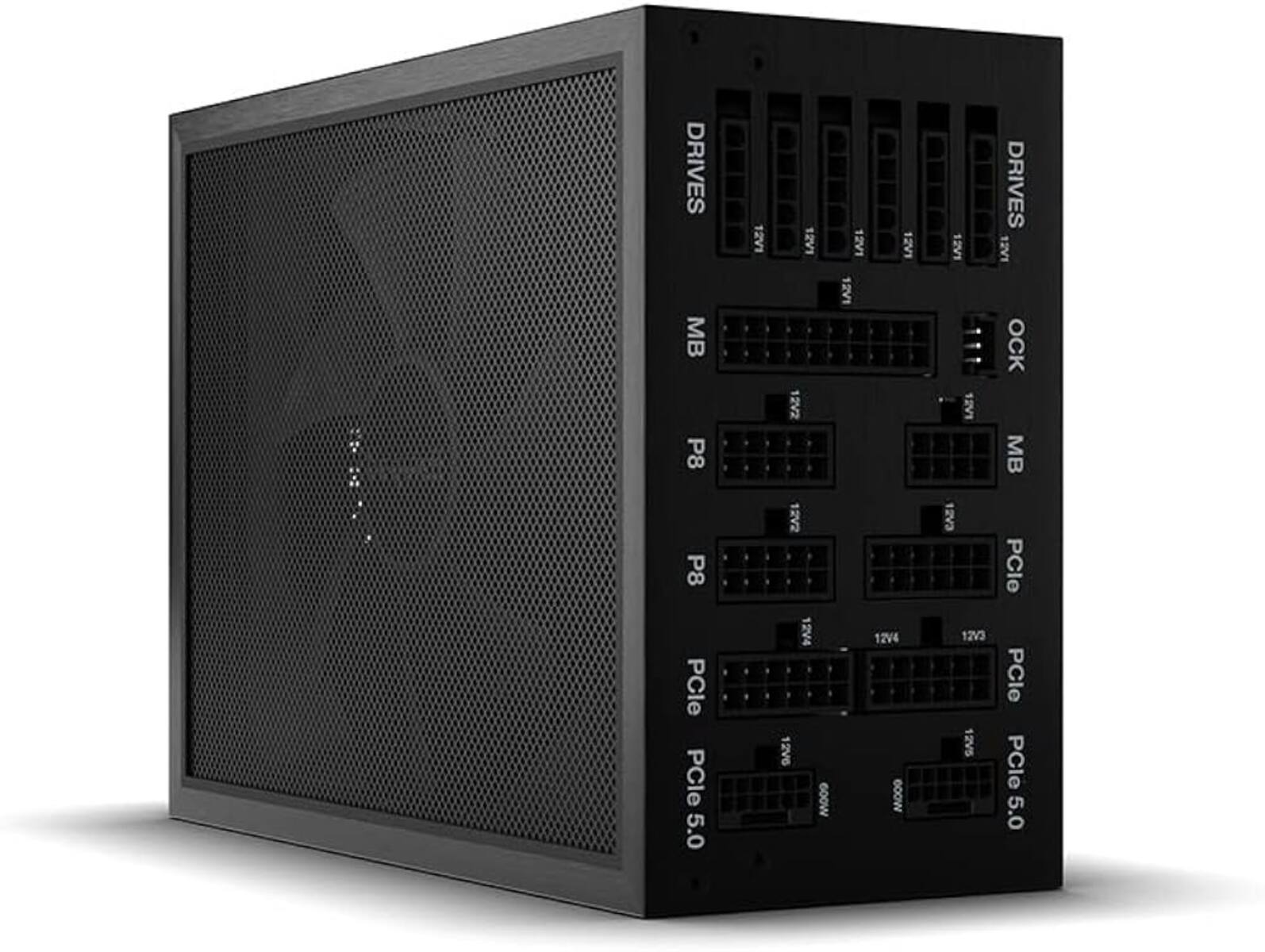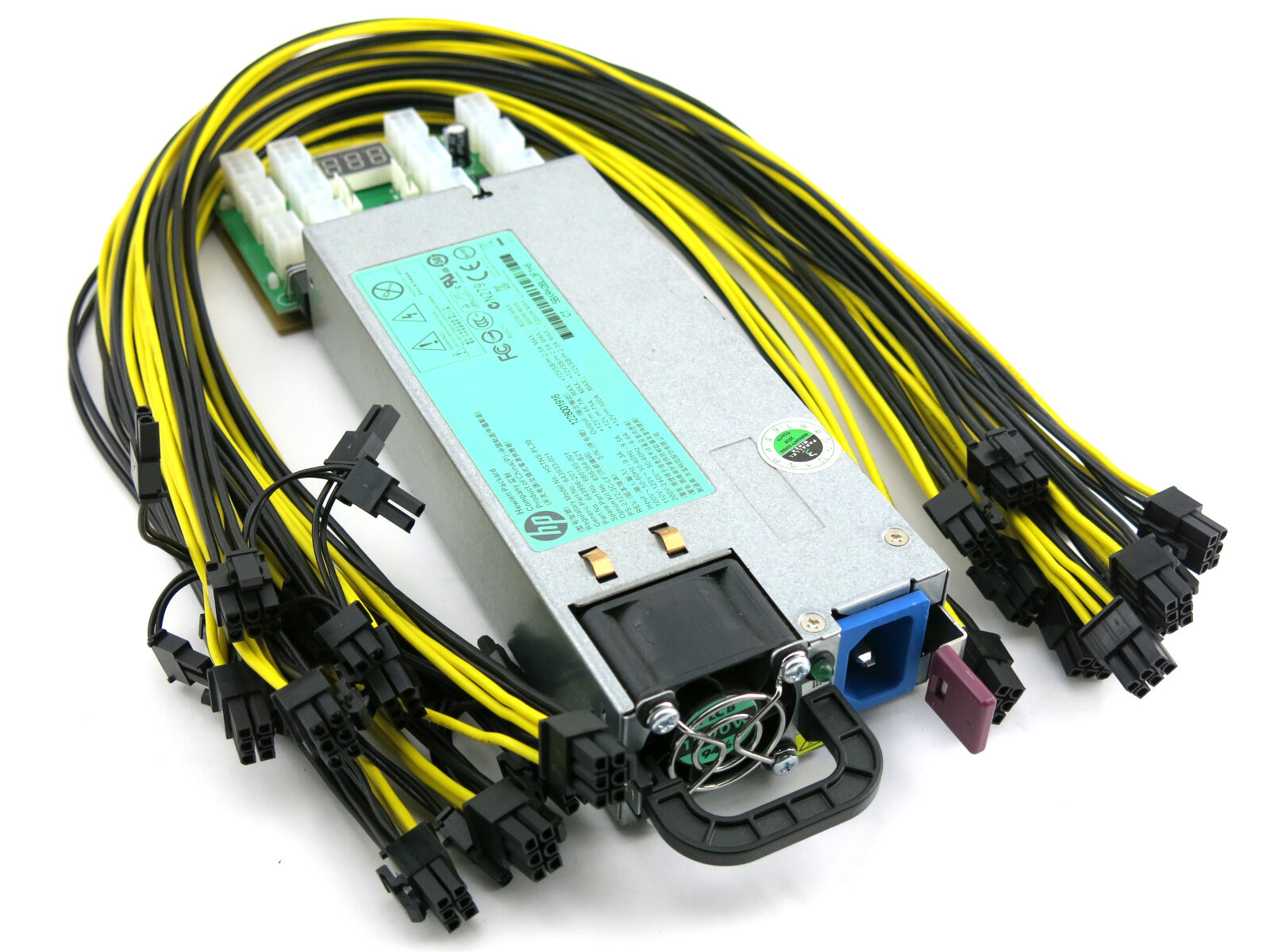Introduction
Welcome to the world of cryptocurrency mining! If you are new to this exciting field, you may be wondering how to maximize your mining setup for optimal performance. One key aspect of mining is ensuring a stable and reliable power supply. In some cases, a single power supply may not be enough to meet the power demands of your mining rig, leading to potential issues.
This is where connecting two power supplies (PSUs) can come in handy. By combining the power output of two separate PSUs, you can ensure that your mining rig has enough power to operate smoothly and efficiently. This guide will walk you through the process of connecting two PSUs for mining.
Before diving into the details, let’s take a brief look at what mining entails and why connecting two PSUs can be beneficial.
What is Mining?
Cryptocurrency mining involves using powerful computer hardware to solve complex mathematical problems that validate and secure transactions on a blockchain network. Miners are rewarded with newly minted coins for their computational effort and contribution to maintaining the network’s integrity.
To mine cryptocurrencies, such as Bitcoin or Ethereum, miners require specialized equipment, including graphics processing units (GPUs) or application-specific integrated circuits (ASICs). These mining rigs consume a significant amount of power to perform the necessary calculations.
Why connect 2 PSU for mining?
The power consumption of mining rigs can put a strain on a single power supply. As the number of GPUs or ASICs increases, so does the need for more power. Running multiple high-powered components on a single PSU may overload it, resulting in unstable performance, system crashes, or even potential damage to the hardware.
Connecting two PSUs allows you to distribute the power load and provide a more stable and reliable power supply. By connecting the PSUs in parallel, you not only increase the available power for your mining rig, but also reduce the strain on each PSU, prolonging their lifespan. This setup can help ensure uninterrupted mining operations and minimize downtime.
Now that you understand the importance of connecting two PSUs for mining, let’s move on to the tools and materials you’ll need for the task.
What is Mining?
Cryptocurrency mining involves using powerful computer hardware to solve complex mathematical problems that validate and secure transactions on a blockchain network. Miners play a crucial role in maintaining the integrity and functionality of digital currencies such as Bitcoin, Ethereum, or Litecoin.
At its core, mining serves two primary functions: validating transactions and creating new units of the cryptocurrency. Miners validate transactions by solving mathematical puzzles, which require significant computational power and energy consumption.
When a cryptocurrency user sends a transaction, it is added to a pool of pending transactions known as the mempool. Miners select transactions from the mempool and verify their authenticity by solving complex mathematical puzzles. This validation ensures that every transaction adheres to the rules of the cryptocurrency network and prevents double-spending.
Once the transactions are validated and grouped together in a block, miners compete with each other to solve a cryptographic puzzle. The first miner to find the solution earns the right to add the block to the blockchain and is rewarded with a predetermined amount of the cryptocurrency.
As more miners join the network, the puzzles become increasingly difficult to solve, requiring more computational power. This arms race for mining capabilities has led to the development of specialized hardware, such as powerful graphics cards (GPUs) or specialized mining rigs known as application-specific integrated circuits (ASICs).
Mining is not limited to individual miners; it can also be performed by mining pools or large-scale mining operations known as mining farms. These entities pool their resources, combining the computational power of multiple miners to increase their chances of successfully mining a block and earning a reward.
It is important to note that mining is resource-intensive and requires a significant investment in equipment, electricity, and cooling infrastructure. The profitability of mining is influenced by factors such as the cost of electricity, mining difficulty, and the price of the cryptocurrency being mined.
Overall, mining is a fundamental process that ensures the security, transparency, and decentralization of cryptocurrencies. Without miners, it would be impossible to verify transactions or maintain the integrity of digital currencies. As the demand for cryptocurrencies continues to grow, mining will remain a crucial aspect of the crypto ecosystem.
Why connect 2 PSU for mining?
Power supply is a critical factor to consider when setting up a mining rig. The mining process requires a significant amount of power to run the mining hardware efficiently. In some cases, a single power supply unit (PSU) may not be sufficient to handle the power demands of a high-performance mining rig. This is where connecting two PSUs can greatly benefit miners.
Connecting two PSUs allows miners to distribute the power load and ensure a stable and reliable power supply for their mining rig. Here are a few reasons why connecting two PSUs for mining is a smart choice:
1. Increased Power Output:
As mining rigs become more powerful and complex, they require more power to operate efficiently. When a single PSU cannot provide enough power to meet the demands of the mining rig, connecting an additional PSU increases the total power output. This ensures that all components receive adequate power, preventing instability or sudden shutdowns.
2. Load Distribution:
By connecting two PSUs, miners can distribute the power load evenly between the two units. This helps in maintaining a balanced power supply to the mining rig, reducing the strain on each PSU and minimizing the risk of overheating or failure. Balanced power distribution improves the overall performance and longevity of the mining hardware.
3. Redundancy and Backup:
Connecting two PSUs provides a level of redundancy and backup in case one of the units fails. If one PSU stops functioning or develops a fault, the other PSU will continue to power the mining rig, allowing for uninterrupted mining operations. This redundancy feature is particularly crucial for miners who rely on their rigs to generate a steady income.
4. Scalability:
As mining requirements evolve, miners may need to add more GPUs or ASICs to their rig. Connecting two PSUs ensures that miners have enough power capacity to accommodate additional hardware without overloading a single PSU. This scalability factor gives miners the flexibility to expand their mining operations without the need for a complete overhaul of their power supply system.
5. Efficiency and Performance:
Connecting two PSUs can help improve the overall efficiency and performance of the mining rig. When the power load is evenly distributed, PSUs can operate at their optimum efficiency levels, reducing energy wastage and minimizing heat generation. This can result in lower electricity costs and a cooler operating environment for the mining rig.
By connecting two PSUs for mining, miners can ensure a stable and reliable power supply, increase power output, distribute the load, provide redundancy, and enhance overall efficiency. These advantages contribute to a more robust mining setup, allowing miners to maximize their mining capabilities and optimize their mining operations.
Tools and Materials Needed
Before you begin connecting two power supply units (PSUs) for mining, make sure you have the necessary tools and materials. Here’s a list of what you’ll need:
1. Two Power Supply Units:
Ensure you have two compatible power supply units. It is recommended to use PSUs with similar power ratings to ensure efficient power distribution. Look for PSUs with high efficiency ratings for optimal performance and energy savings.
2. Power Supply Adapter:
You may need a power supply adapter cable to connect the two PSUs. This cable will allow you to bridge the connections between the two PSUs and combine their power outputs effectively.
3. Screwdriver:
A screwdriver will be necessary to secure the connections and fasten screws on the power supply and mining rig components. Make sure you have a suitable screwdriver size for the job.
4. Cable Ties or Zip Ties:
These are essential for cable management and organization. Cable ties will help keep the wires tidy and prevent them from interfering with the mining rig’s operation or becoming a safety hazard.
5. Multimeter:
Having a multimeter on hand will allow you to measure voltage and ensure that the power supply outputs are within the acceptable range. This will help you identify any potential issues and ensure a safe and stable power supply for your mining rig.
6. Electrical Tape:
Electrical tape can be used to secure and insulate wires and connections to prevent any electrical hazards. It provides an added layer of protection and helps keep the cables neat and organized.
7. Safety Precautions:
Ensure you have proper safety gear, such as safety goggles and gloves, to protect yourself from any potential harm. It is also important to work in a well-ventilated area and follow electrical safety protocols to minimize the risk of electrical accidents.
With these tools and materials gathered, you are ready to begin the process of connecting two PSUs for your mining rig. Remember to take the necessary precautions and follow each step carefully to ensure a successful and safe setup.
Precautions and Safety Measures
When connecting two power supply units (PSUs) for mining, it is crucial to prioritize safety to avoid any potential hazards or accidents. Here are some precautions and safety measures to keep in mind:
1. Power off and Unplug:
Before working on any electrical components or connections, ensure that the mining rig is powered off and unplugged from the mains. This will prevent accidental shocks or short circuits while handling the PSUs.
2. Use Proper Power Cables:
Use the correct power cables that are designed for the specific PSUs being used. Do not attempt to modify or use incompatible cables as this can lead to electrical fires or damage to the hardware.
3. Check Compatibility:
Ensure that the PSUs are compatible with each other and the mining rig’s components. Verify that the power output, connectors, and voltage requirements align with the rig’s specifications to prevent any power-related issues.
4. Proper Cable Management:
Maintain good cable management practices to prevent cables from interfering with the operation of fans, cooling systems, or other components. Use cable ties or zip ties to secure and organize cables, keeping them away from fans or moving parts.
5. Avoid Overloading Circuits:
Be mindful of the power load on the electrical circuit you are using. Overloading a circuit can lead to overheating, electrical shorts, or tripping of circuit breakers. Distribute the power load evenly across circuits or consider using a separate electrical circuit for each PSU.
6. Proper Ventilation:
Ensure that the mining rig has proper ventilation to prevent overheating. Overheating can reduce the lifespan of components and increase the risk of fire. Make sure the PSUs and the rig’s cooling fans have adequate airflow and are not obstructed.
7. Test the Connections:
After connecting the PSUs, double-check all the connections to ensure they are secure. Use a multimeter to measure the voltage output from each PSU to verify they are within the acceptable range. This will help identify any potential issues before powering on the mining rig.
8. Fire Safety:
Have fire safety measures in place, such as an easily accessible fire extinguisher rated for electrical fires. Familiarize yourself with the location and operation of the fire extinguisher in case of emergencies.
9. Regular Maintenance:
Perform regular maintenance checks on the PSUs and the mining rig to ensure their proper functioning. Clean the components and fans regularly to remove dust and debris that can hinder performance or cause overheating.
By following these precautions and safety measures, you can minimize the risks associated with connecting two PSUs for mining. Prioritizing safety not only protects you from accidents but also ensures the longevity and reliability of your mining rig.
Step 1: Selecting Compatible Power Supplies
The first step in connecting two power supply units (PSUs) for mining is to ensure they are compatible with each other and with your mining rig’s requirements. Here are the key considerations when selecting compatible PSUs:
1. Power Requirements:
Review the power requirements of your mining rig, including the power draw of each component, such as GPUs or ASICs. Sum up the power requirements and choose PSUs that can collectively provide enough power to meet the demands of your entire mining rig. It is generally recommended to have a higher total power output capacity than the calculated power requirements to allow for future upgrades or additions to your mining setup.
2. Power Output:
Check the power output of each PSU, typically specified in watts (W). Make sure the combined power output of the two PSUs meets or exceeds the power requirements of your mining rig. It is important to have a balanced power distribution between the two PSUs to improve efficiency and prevent overheating or overloading of either unit.
3. Connectors and Cables:
Ensure that the PSUs have compatible connectors and cables for your mining rig’s components. Check the availability and number of PCIe power connectors, SATA power connectors, and other necessary connectors. Having the right connectors and cables will ensure a proper connection and power supply to each component of your mining rig.
4. Efficiency and Ratings:
Consider the efficiency rating of the PSUs, usually represented as a percentage. Look for PSUs with high-efficiency ratings, such as 80 Plus Gold or Platinum. Higher-efficiency PSUs consume less power from the wall socket, reducing energy costs and heat generation. This can contribute to a more stable and efficient mining operation.
5. Safety Features:
Check if the PSUs have safety features like overload protection, short circuit protection, and overcurrent protection. These features are essential as they safeguard your mining rig from voltage spikes or other electrical irregularities, reducing the risk of component damage or failure.
6. Brand Reputation and Warranty:
Consider the reputation of the PSU brands and read reviews to ensure you choose reputable and reliable manufacturers. Additionally, check the warranty period offered by the manufacturers as it reflects their confidence in the product’s quality and longevity.
Once you have chosen compatible power supplies for your mining rig, you are ready to proceed to the next step: connecting the first PSU.
Step 2: Connecting the First PSU
Now that you have selected compatible power supplies for your mining rig, it’s time to connect the first power supply unit (PSU). Follow these steps to ensure a proper and secure connection:
1. Power Off and Unplug:
Ensure that your mining rig is powered off and unplugged from the mains before proceeding. This will prevent any electrical accidents or mishaps during the installation process.
2. Attach Power Cables:
Connect the necessary power cables from the first PSU to your mining rig’s components. Make sure to use the appropriate cables and connectors for each component. For example, use PCIe power cables for GPUs and SATA power cables for SSDs or hard drives.
3. Secure Connections:
Ensure that all power cables are securely plugged into their respective components. Check for any loose connections and ensure a snug fit. Loose connections can cause power fluctuations and potentially damage your hardware.
4. Connect to the Wall Socket:
Connect the power cable of the first PSU to a suitable wall socket. Make sure the socket is grounded and can handle the power load of your mining rig. Avoid overloading the circuit by distributing the power load across different sockets if necessary.
5. Power On:
After double-checking all the connections, power on the first PSU using the power switch located on the back of the unit. Verify that the PSU is receiving power and the fans are running. However, the mining rig components should not power on at this point.
6. Test the Connections:
With the first PSU powered on, use a multimeter to check the voltage outputs. Measure the voltage on the various connectors to ensure they fall within the acceptable range. This step helps identify any potential issues with the PSU or the connections.
7. Cable Management:
Once the connections are confirmed and the first PSU is functioning properly, tidy up the cables using cable ties or zip ties. Proper cable management ensures better airflow and reduces the risk of cable interference with fans or other components.
With the first PSU successfully connected and powered on, you are now ready to proceed to the next step: connecting the second PSU.
Step 3: Connecting the Second PSU
Now that you have connected the first power supply unit (PSU) for your mining rig, it’s time to connect the second PSU. Follow these steps to ensure a proper and secure connection:
1. Power Off and Unplug:
Before connecting the second PSU, ensure that your mining rig is powered off and unplugged from the mains. This will prevent any electrical accidents or mishaps during the installation process.
2. Power Supply Adapter:
Connect the power supply adapter cable to the second PSU. This cable will bridge the connections between the two PSUs and allow for the sharing of power.
3. Second PSU to Mining Rig Components:
Connect the necessary power cables from the second PSU to your mining rig’s remaining components. Ensure that you use the appropriate cables and connectors for each component, just as you did when connecting the first PSU.
4. Secure Connections:
Double-check all the power cable connections to ensure they are securely plugged into their respective components. Verify that there are no loose connections or cables that could potentially cause power fluctuations or damage the hardware.
5. Connect to the Wall Socket:
Connect the power cable of the second PSU to a suitable wall socket, just like you did with the first PSU. Ensure that the socket is grounded and can handle the combined power load of both PSUs.
6. Power On the Second PSU:
After confirming all the connections, power on the second PSU using its power switch. The second PSU should now receive power and its fans should start running.
7. Testing the Connections:
With both PSUs powered on, use a multimeter to test the voltage outputs from each PSU. Measure the voltage on the various connectors to ensure they are within the acceptable range. This step helps identify any potential issues with the second PSU or its connections.
8. Cable Management:
Once all the connections have been verified and both PSUs are functioning properly, tidy up the cables using cable ties or zip ties. Proper cable management improves airflow and reduces the risk of cable interference with fans or other components.
Congratulations! You have successfully connected the second PSU to your mining rig. The combined power output from the two PSUs will provide a stable and reliable power supply for your mining operations. Proceed to the next step to test the connection and ensure everything is functioning as expected.
Step 4: Testing the Connection
After connecting both power supply units (PSUs) for your mining rig, it’s important to test the connection to ensure everything is functioning as expected. Follow these steps to perform a thorough test:
1. Power On the Mining Rig:
Before testing the connection, ensure that both PSUs are powered on and receiving power. Use the power switches on the back of each unit to turn them on.
2. Check Mining Rig Components:
Observe the mining rig’s components, including GPUs, fans, and other devices. Verify that all components are receiving power and are operating properly. Look for any signs of abnormal behavior, such as fans not spinning or error messages on the display.
3. Monitor System Stability:
Monitor the stability of your mining rig for a period of time, ideally at least an hour or more. Watch for any sudden shutdowns, restarts, or irregularities in performance. Ensure that the system remains stable and the components do not overheat or experience any power-related issues.
4. Measure Voltage Outputs:
Use a multimeter to measure the voltage outputs from both PSUs. Test the voltage on various connectors to ensure they are within the acceptable range. Compare the readings to the specifications of your mining rig’s components to confirm compatibility and proper power distribution.
5. Run Mining Software:
Launch your mining software and start the mining process. Monitor the hashrate, temperature, and power consumption of your mining rig. Ensure that all components are operating within optimal ranges and that the mining software is running smoothly.
6. Monitor Energy Consumption:
Monitor the energy consumption of your mining rig using a power meter or monitoring software. Compare the energy consumption to the expected power draw and make adjustments if necessary. Efficient power usage will help minimize electricity costs and prolong the lifespan of your PSUs.
7. Troubleshooting:
If you encounter any issues during the testing phase, such as instability, high temperatures, or system errors, carefully review your connections and troubleshoot accordingly. Double-check cable connections, ensure proper airflow, and make any necessary adjustments to optimize performance and stability.
By thoroughly testing the connection and monitoring the performance of your mining rig, you can identify any potential issues early on and take appropriate measures to maintain a stable and efficient mining operation. Remember to periodically monitor your rig and make any necessary adjustments to ensure optimal performance.
Conclusion
Connecting two power supply units (PSUs) for mining can improve the stability, scalability, and efficiency of your mining rig. By distributing the power load and ensuring a reliable power supply, you can optimize your mining operations and minimize downtime. Here’s a summary of what we’ve covered in this guide:
We began by understanding the concept of mining and the importance of a stable power supply. Mining involves using powerful hardware to validate and secure transactions on a blockchain network, and connecting two PSUs helps meet the power demands of mining rigs.
We then discussed the reasons for connecting two PSUs, including increased power output, load distribution, redundancy, scalability, and improved efficiency. These benefits contribute to a more robust and reliable mining setup.
Next, we explored the tools and materials needed for connecting two PSUs, including the PSUs themselves, power supply adapters, screwdrivers, cable ties, multimeters, and safety gear. Having the right tools and materials is essential for a smooth installation process.
Safety precautions and measures were also highlighted to ensure a safe working environment. These precautions include powering off and unplugging the mining rig, using proper power cables, ensuring compatibility, managing cables, avoiding overloading circuits, and regular maintenance.
We then walked through the step-by-step process of connecting the PSUs, starting with selecting compatible power supplies, connecting the first PSU, connecting the second PSU, and testing the connection. Each step was explained in detail to guide you through the installation process effectively.
Finally, we emphasized the importance of testing the connection, monitoring system stability, measuring voltage outputs, running mining software, and troubleshooting any issues that may arise. Regular monitoring and maintenance will help ensure a well-functioning and efficient mining rig.
By following the guidelines and precautions outlined in this guide, you can confidently connect two PSUs for your mining rig. Remember to prioritize safety, regularly monitor your mining rig, and make any necessary adjustments to optimize performance and efficiency.
With a stable and reliable power supply, your mining rig will be well-equipped to handle the power demands of cryptocurrency mining and maximize your mining capabilities. Happy mining!







